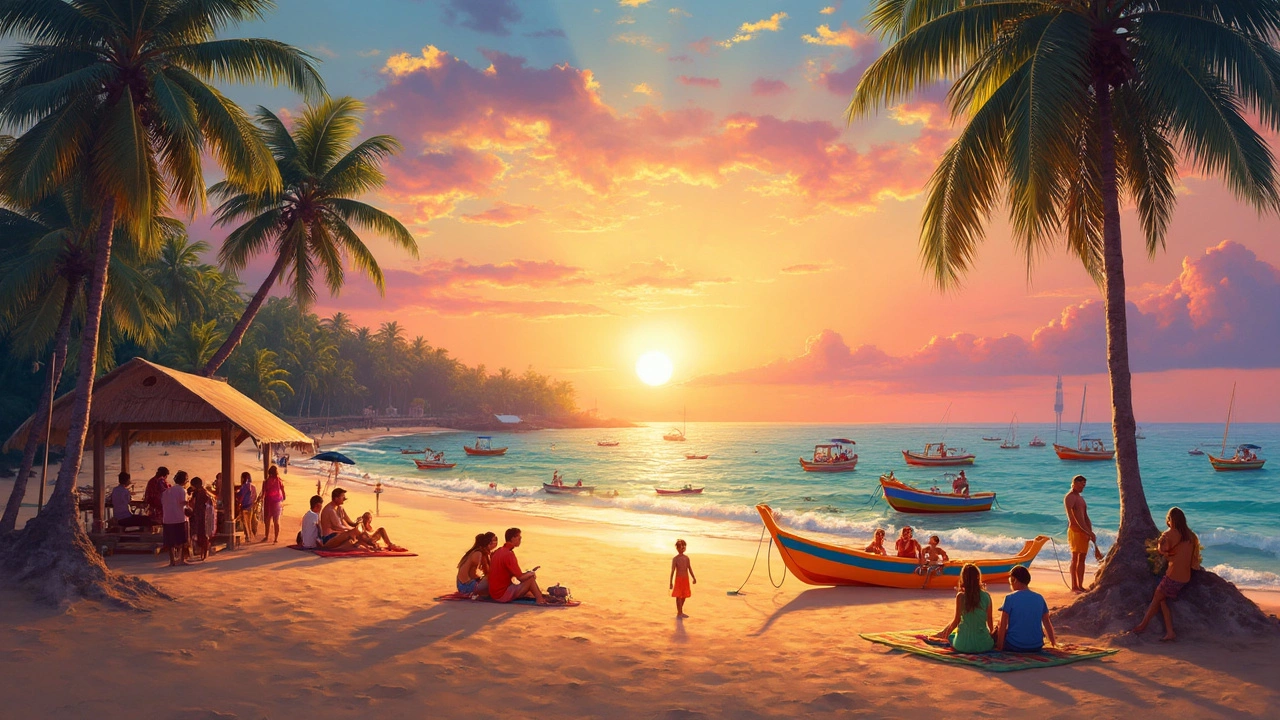
Get inside tips on why Goa stands as India’s legendary beach destination, from its sun-soaked coasts and vibrant nightlife to hidden gems and practical travel advice.
When planning a trip to Indian beaches, the stretches of sand and sea that line India’s extensive coastlinecoastal getaways, you’re tapping into a mix of culture, nature and relaxation. Explore the Indian beaches that range from lively party strips to quiet fishing villages, each with its own vibe and story.
One of the biggest draws is the network of coastal cities, urban hubs built right on the shoreline like Goa, Chennai, Kochi and Visakhapatnam. These places give you easy access to hotels, restaurants and nightlife while keeping the ocean just a short walk away. The city vibe blends with beach life, so you can hunt for street food after a sunrise swim or catch a cultural festival on the promenade.
Behind the scenery, beach tourism, the flow of visitors who come for sun, surf and sand fuels local economies. In 2023, coastal states reported a 12% rise in tourism revenue, proving that the lure of turquoise waters translates into jobs, new restaurants and better infrastructure. Understanding this connection helps you see why certain beaches are more developed and why others stay pristine.
Safety is a practical concern you can’t ignore. Travel safety, the set of precautions for health, security and local customs on Indian beaches includes checking tide times, respecting local dress codes, and staying aware of seasonal monsoon patterns. A quick look at recent advisories shows that most popular spots have reliable lifeguard services and clear signage, but remote bays may lack those amenities. Packing a basic first‑aid kit and keeping copies of your ID can make the difference between a smooth day and an avoidable hassle.
Budget matters, too. India offers a wide price spectrum: a beachfront hostel in Puri might cost just $5 a night, while a luxury resort in Goa can run above $150. By planning ahead, you can balance comfort with cost – use local transport, eat at family‑run shacks and book accommodation during the off‑peak months of July to September to stretch your rupees further. Knowing the typical price range lets you set realistic expectations before you even step on the sand.
Beyond lounging, the coastline bursts with activities. From kite surfing in Kerala to dolphin watching off Gujarat, there’s a sport for every thrill‑seeker. Marine wildlife also adds a layer of fascination: sea turtles nest on the shores of Gopalpur, while coral reefs near Lakshadweep draw snorkelers from around the world. These experiences enrich a beach trip and give you a reason to respect conservation efforts.
Timing your visit can boost the overall experience. The best months for most Indian beaches are November through February, when the weather is cool and rainfall is minimal. However, each region has its own sweet spot – for instance, the Konkan coast shines in March and April, while the east coast enjoys calm seas in May. Checking regional climate patterns ensures you pick the perfect window for sunbathing, water sports or simply soaking up the local culture.
Armed with this overview, you’ll know what to expect, how to stay safe, and where to get the most value from your beach adventure. Below you’ll find a curated collection of articles that dive deeper into specific destinations, safety checklists, budget hacks and activity guides, giving you all the tools you need for an unforgettable Indian seaside journey.

Get inside tips on why Goa stands as India’s legendary beach destination, from its sun-soaked coasts and vibrant nightlife to hidden gems and practical travel advice.